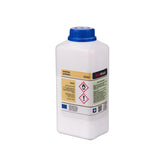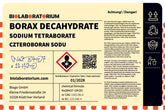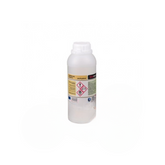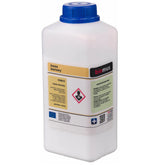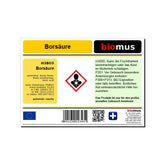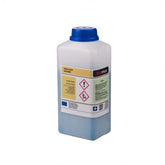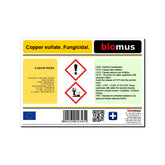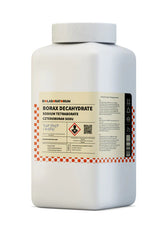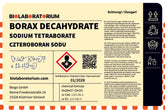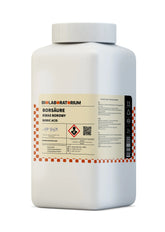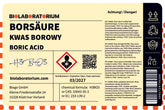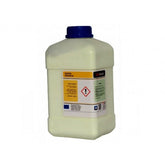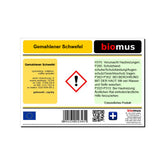Rhodamine B – Properties, Laboratory Applications, and Safety
Rhodamine B is a widely used fluorescent dye employed in a variety of scientific and technical applications. In this blog post, we will take a closer look at the key properties, uses, and safety aspects of this chemical dye.
What is Rhodamine B?
Rhodamine B is a synthetic organic dye belonging to the xanthene dye group. It is characterized by an intense red color and strong fluorescence when excited by light of specific wavelengths. The chemical structure of Rhodamine B consists of a xanthene backbone with two diethylamino groups.
Due to its excellent fluorescence properties, Rhodamine B is used in numerous application areas, particularly in analytics, microscopy, and biotechnology. Additionally, it is also used in the food and cosmetics industries as well as in printing inks.
Properties of Rhodamine B
Rhodamine B is a crystalline, reddish-violet solid that is readily soluble in water, alcohol, and other polar organic solvents. When dissolved in water, it forms an intensely red solution that exhibits strong red fluorescence under UV or blue light.
The fluorescence intensity of Rhodamine B is very high and can be influenced by varying the concentration or solvent. Furthermore, the dye is photostable and relatively resistant to oxidation and hydrolysis.
In addition to its optical properties, Rhodamine B is also characterized by good solubility in biological media, making it interesting for many applications in cell biology and microscopy.
Laboratory applications of Rhodamine B
Due to its excellent fluorescence properties, Rhodamine B is indispensable in numerous analytical and biotechnological applications:
Fluorescence labeling
Rhodamine B is commonly used as a fluorescence marker for proteins, nucleic acids, or other biological molecules. Through covalent binding to the target molecule, these can then be made visible under the fluorescence microscope.
Cell Biology Applications
In cell biology, Rhodamine B is used to stain cell organelles such as mitochondria or lysosomes. The study of cell membranes and transport processes within cells is also possible using Rhodamine B labeling.
Tracer Experiments
Due to its fluorescence, Rhodamine B is excellent as a tracer in flow studies, for example in hydrology or environmental analytics. By adding the dye, flow paths and transport processes in water bodies or soils can be tracked.
Analytical Methods
In chemical analytics, Rhodamine B is frequently used as a fluorescence indicator, for example in high-performance liquid chromatography (HPLC) or capillary electrophoresis. The dye is also used in immunoassays and enzyme tests.
Further Applications
In addition to the main applications mentioned, Rhodamine B is also used in the food and cosmetics industry as a dye, in printing inks, and in security applications such as leak detection.
Safety Aspects of Rhodamine B
Although Rhodamine B is considered safe in many applications, certain safety aspects must be observed during handling and disposal:
Toxicity
Rhodamine B is classified as potentially carcinogenic and should therefore be handled with caution. Inhalation, ingestion, or skin contact may cause irritation. Exposure should therefore be avoided.
Environmental Compatibility
Rhodamine B is a synthetic dye that is difficult to biodegrade. Improper disposal can lead to its accumulation in the environment, contaminating water bodies or soils. Proper disposal is therefore essential.
Laboratory Handling
In the laboratory context, Rhodamine B must always be handled under a fume hood and with appropriate protective equipment such as lab coats, gloves, and safety goggles. Spills should be promptly contained and disposed of.
Overall, handling Rhodamine B requires special care and caution due to its properties and risks. However, by following safety guidelines, the dye can be used safely and effectively in many applications.
Conclusion
Rhodamine B is a versatile fluorescent dye with excellent optical properties. It has numerous applications in science and technology, particularly in analytics, microscopy, and biotechnology.
However, when handling and disposing of Rhodamine B, potential health and environmental risks must be considered. With the proper safety measures, the dye can be used safely and effectively.
